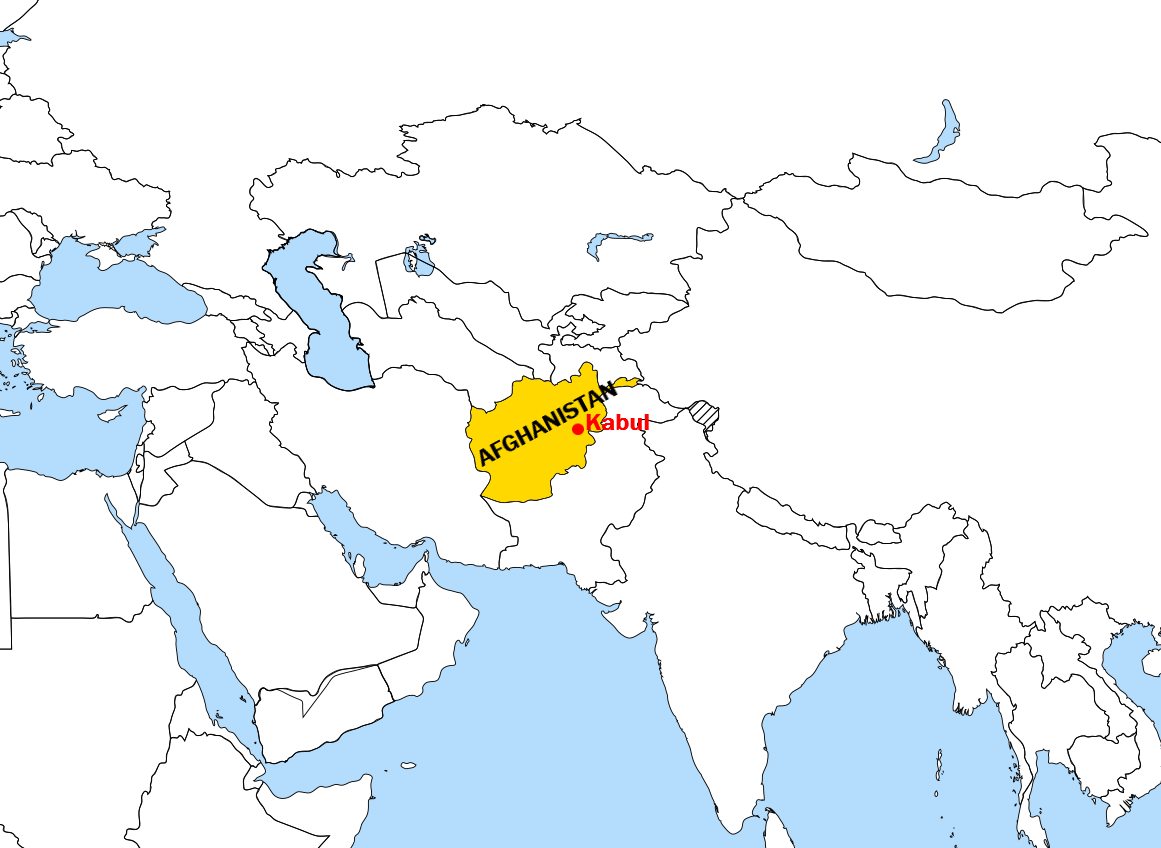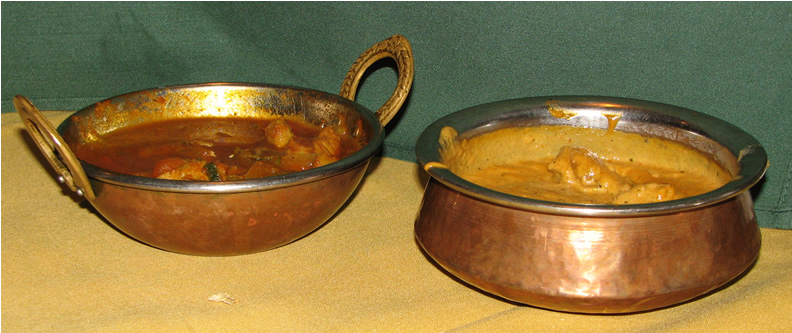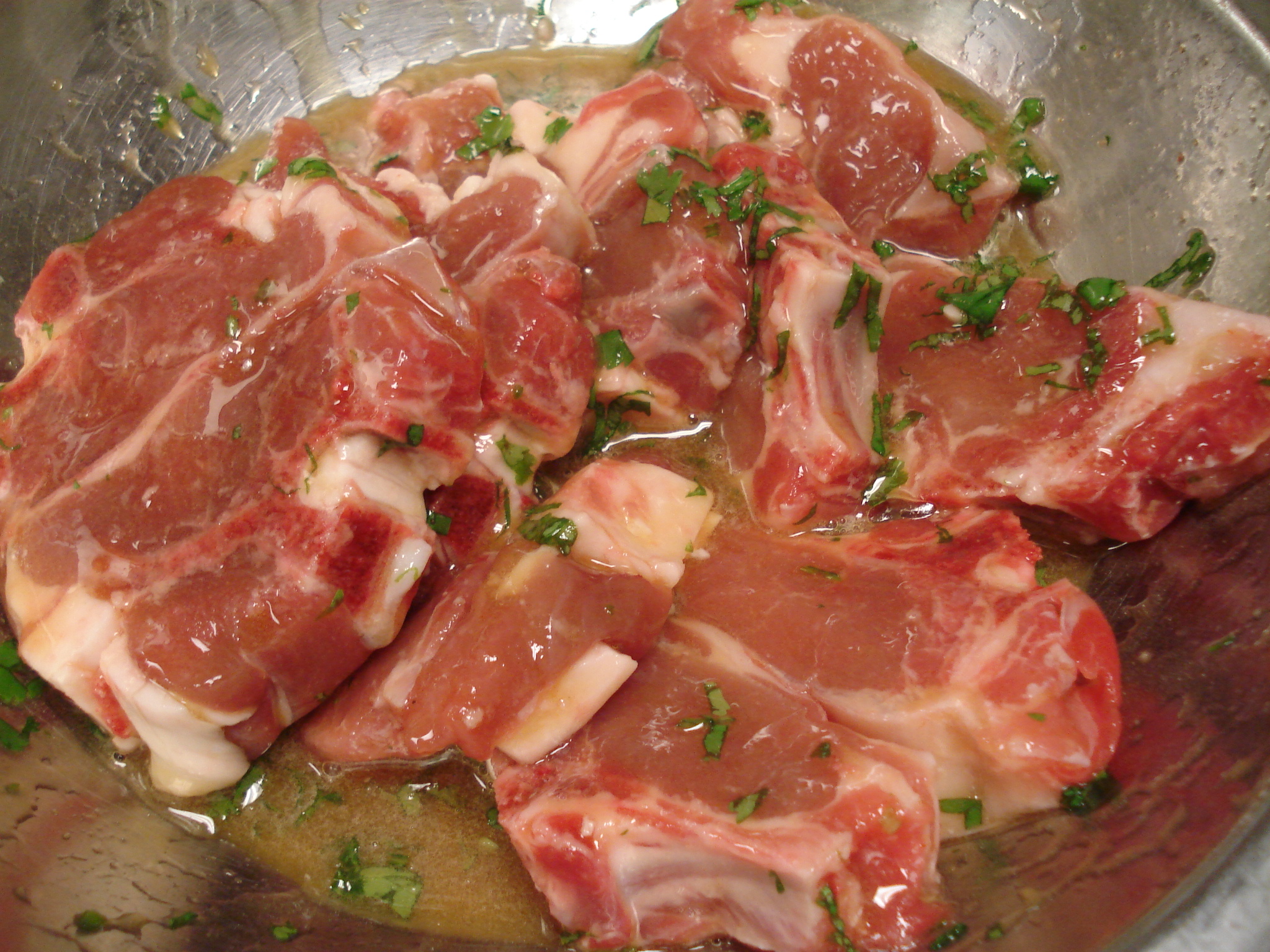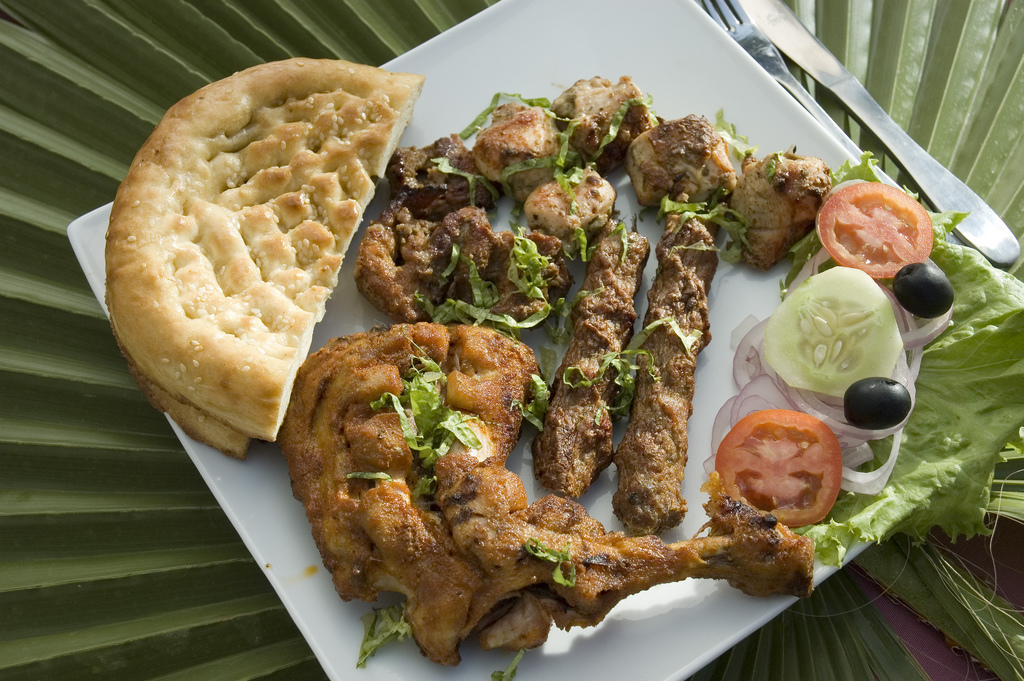|
Gosht
Gosht or ghosht refers to tender meat, cooked for a long time, and used as an ingredient in a number of Middle Eastern cuisine, Central Asian cuisine and cuisine of the Indian subcontinent. The word stems from the Persian word gosht and the word "gulwa", meaning "meat" or "flesh" and "savoury", especially that of goat. In India, most gosht dishes include goat or mutton. In India, the term ''mutton'' is more likely to refer to the meat of a goat rather than that of an adult sheep, as it does elsewhere in the English-speaking world. When Indian dishes are adapted for Western diners, lamb is the meat most often used in the adaptation. This has led to a common misconception that gosht means "lamb". The popular Indian subcontinental dish of Biryani as well as the Afghan dish of Biryan use ''Gosht'' as a primary ingredient. Some dishes include: * Bhuna gosht, a curry with a thick, reduced sauce * Karahi or Kadhai gosht, cooked in a traditional round-sided pot * Raan gosht, roast ... [...More Info...] [...Related Items...] OR: [Wikipedia] [Google] [Baidu] |
Biryani
Biryani () is a mixed rice dish originating in South Asia, made with rice, meat (chicken, goat, lamb, beef) or seafood (prawns or fish), and spices. To cater to vegetarians, the meat or seafood can be substituted with vegetables or paneer. Sometimes eggs or potatoes are also added. Biryani is one of the most popular dishes in South Asia and the South Asian diaspora. Similar dishes are also prepared in many other countries like Iraq and Malaysia, and was often spread to such places by South Asian diaspora populations. ''Biryani'' is the single most-ordered dish on Indian online food ordering and delivery services, and has been labelled as the most popular dish overall in India. Etymology Some theories suggest that the it originated from the ''vrīhí'' (), meaning rice. Other theories suggest originated from ''birinj'' (), the Persian word for rice. Another theory states that it was derived from ''biryan'' or ''beriyan'' (), which means "to fry" or "to roast". It may ... [...More Info...] [...Related Items...] OR: [Wikipedia] [Google] [Baidu] |
Saag
Saag also spelled sag, saagh or saga, is a leafy vegetable dish from the Indian subcontinent. It is eaten with bread, such as roti or naan, or in some regions with rice. Saag can be made from mustard greens, collard greens, basella or finely chopped broccoli along with added spices and sometimes other ingredients, such as chhena. In India, it is common, especially in the state of Odisha, where it is eaten with pakhala. In the Shree Jagannath Temple of Puri, saag is one of the dishes offered to Jagannath as part of Mahaprasad. Saag is also common in West Bengal and other regions of North India, where the most common preparation is sarson ka saag (mustard plant leaves), which may be eaten with makki ki roti, a yellow roti made with maize flour. ''Saag gosht'' or ''hariyali maans'' (spinach and mutton) is a common dish in the North Indian state of Punjab. In Pakistan, it is most commonly eaten in the Punjab province along with Makki ki roti, made from freshly ground corn f ... [...More Info...] [...Related Items...] OR: [Wikipedia] [Google] [Baidu] |
Afghan Cuisine
Afghan cuisine is influenced by Persian, Central Asian and South Asian cuisines due to Afghanistan's close proximity and cultural ties. The cuisine is halal and mainly based on mutton, beef, poultry and fish with rice and Afghan bread. Accompanying these are common vegetables and dairy products, such as milk, yogurt, whey, and fresh and dried fruits such as apples, apricots, grapes, bananas, oranges, plums, pomegranates, sweet melons, and raisins. The diet of most Afghans revolves around rice-based dishes, while various forms of naan are consumed with most meals. Tea is generally consumed daily in large quantities, and is a major part of hospitality. The culinary specialties reflect the nation's ethnic and geographic diversity. The national dish of Afghanistan is '' Kabuli palaw'', a rice dish cooked with raisins, carrots, nuts, and lamb or beef. Background The cuisine of Afghanistan is ''halal'' and has elements from various places: for example, ''garam masala'' from India ... [...More Info...] [...Related Items...] OR: [Wikipedia] [Google] [Baidu] |
Karahi
A ''karahi'' is a type of thick, circular, and deep cooking pot, similar in shape to a wok, from Northern South Asia. It is used in Indian cuisine, North Indian, Pakistani cuisine, Pakistani, Afghanistan cuisine, Afghan, Nepalese cuisine, Nepalese, and Caribbean cuisines. Traditionally press-formed from Carbon_steel#Mild_steel, mild steel sheets or made of wrought iron, a ''karahi'' is a wok with steeper sides. Today, they can be made of stainless steel, copper, and Non-stick surface, nonstick surfaces, both round and flat-bottomed, or of traditional materials. The word ''karahi'' emanates from ''karah'', a bigger version of karahi traditionally used in the subcontinent for boiling milk and producing Cream, thick cream. History ''Karahi'' or ''kadahi'' comes from the Prakrit word ''kataha'', which is mentioned in texts like the ''Ramayana'' and Sushruta Samhita, ''Sushruta Samhita'', and derives from Sanskrit ''kataha'' (meaning a frying pan, boiler, cauldron or saucepan). A ka ... [...More Info...] [...Related Items...] OR: [Wikipedia] [Google] [Baidu] |
Bengali Cuisine
Bengali cuisine is the culinary style of Bengal, that comprises Bangladesh and the Indian state of West Bengal, and Assam's Karimganj district. The cuisine has been shaped by the region's diverse history of Bengal, history and climate. It is known for its varied use of flavours including mustard oil, as well as the spread of its confectioneries and desserts. There is a strong emphasis on rice as a staple, with fish traditionally the most common protein. Freshwater fish are preferred to seafish, although barramundi, known as ''bhetki'', is also common. Meat is also a common protein among Bengalis, with chicken and mutton being the most popular. Beef is popular within the Muslim community. In more recent times, lentils have begun to form a significant part of the diet. Many Bengali food traditions draw from religious and social functioms, such as Adda (South Asian), adda, Poila Boishakh, Eid-al-fitr, Eid, and Durga Puja. Culinary influences Mughal influence Muslims conquered Beng ... [...More Info...] [...Related Items...] OR: [Wikipedia] [Google] [Baidu] |
Goat Meat
Goat meat is the meat of the domestic goat (''Capra hircus''). The term 'goat meat' denotes meat of older animals, while meat from young goats is called 'kid meat'. In South Asian cuisine, goat meat is called mutton, along with sheep meat.''Oxford English Dictionary'', 3rd edition, June 2003blend of "goat" in French and "sheep" in French, was coined in 1922 and selected by a trade association; it was adopted by the United States Department of Agriculture in 1928, however the term never caught on and is not encountered in the United States. "Cabrito", a word in Spanish and Portuguese, is the meat of a young, milk-fed goat. It is also known as chivo meat. In cuisine Goat meat is both a staple and a delicacy in the world's cuisines. The cuisines best known for their use of goat include African cuisine, Middle Eastern, Indian, Indonesian, Nepali, Bangladeshi, Pakistani, Abruzzese, Mexican, Caribbean (Jamaica), Haitian cuisine, Dominican cuisine and Ecuadorian. Cab ... [...More Info...] [...Related Items...] OR: [Wikipedia] [Google] [Baidu] |
Beef
Beef is the culinary name for meat from cattle (''Bos taurus''). Beef can be prepared in various ways; Cut of beef, cuts are often used for steak, which can be cooked to varying degrees of doneness, while trimmings are often Ground beef, ground or minced, as found in most hamburgers. Beef contains protein, iron, and vitamin B12. Along with other kinds of red meat, high consumption is associated with an increased risk of colorectal cancer and coronary heart disease, especially when processed meat, processed. Beef has a high Environmental impact of meat production, environmental impact, being a primary driver of deforestation with the highest greenhouse gas emissions of any agricultural product. In prehistoric times, humans hunted aurochs and later domesticated them. Since that time, numerous beef cattle, breeds of cattle have been Selective breeding, bred specifically for the quality or quantity of their meat. Today, beef is the third most widely consumed meat in the world, aft ... [...More Info...] [...Related Items...] OR: [Wikipedia] [Google] [Baidu] |
Bengali Words And Phrases
Bengali or Bengalee, or Bengalese may refer to: *something of, from, or related to Bengal, a large region in South Asia * Bengalis, an ethnic and linguistic group of the region * Bengali language, the language they speak ** Bengali alphabet, the writing system ** Bengali–Assamese script *** Bengali (Unicode block), a block of Bengali characters in Unicode Other usage People * Abdul Wahid Bengali, 19th-century theologian * Athar Ali Bengali, politician and teacher * Bengali-Fodé Koita, Guinean footballer * Bengali Keïta, Guinean centre-back * Bengali Singh, Indian politician * Izzatullah Bengali, 18th-century Persian language author * Mohamed Bengali, Ivorian footballer * Shah Nuri Bengali, 18th-century Sufi and author Places * Bengali Market, a market in New Delhi, India * Bengali, Nancowry, a village in Andaman and Nicobar Islands, India Miscellaneous * Bangali River, river in northern Bangladesh * , a ship launched in 1837 and wrecked in 1951 * Bengali, a fictional cat ... [...More Info...] [...Related Items...] OR: [Wikipedia] [Google] [Baidu] |
Urdu-language Words And Phrases
Urdu (; , , ) is an Indo-Aryan language spoken chiefly in South Asia. It is the national language and ''lingua franca'' of Pakistan. In India, it is an Eighth Schedule language, the status and cultural heritage of which are recognised by the Constitution of India. Quote: "The Eighth Schedule recognizes India's national languages as including the major regional languages as well as others, such as Sanskrit and Urdu, which contribute to India's cultural heritage. ... The original list of fourteen languages in the Eighth Schedule at the time of the adoption of the Constitution in 1949 has now grown to twenty-two." Quote: "As Mahapatra says: "It is generally believed that the significance for the Eighth Schedule lies in providing a list of languages from which Hindi is directed to draw the appropriate forms, style and expressions for its enrichment" ... Being recognized in the Constitution, however, has had significant relevance for a language's status and functions. It also has ... [...More Info...] [...Related Items...] OR: [Wikipedia] [Google] [Baidu] |
South Asian Curries
South is one of the cardinal directions or compass points. The direction is the opposite of north and is perpendicular to both west and east. Etymology The word ''south'' comes from Old English ''sūþ'', from earlier Proto-Germanic ''*sunþaz'' ("south"), possibly related to the same Proto-Indo-European root that the word ''sun'' derived from. Some languages describe south in the same way, from the fact that it is the direction of the sun at noon (in the Northern Hemisphere), like Latin meridies 'noon, south' (from medius 'middle' + dies 'day', ), while others describe south as the right-hand side of the rising sun, like Biblical Hebrew תֵּימָן teiman 'south' from יָמִין yamin 'right', Aramaic תַּימנַא taymna from יָמִין yamin 'right' and Syriac ܬܰܝܡܢܳܐ taymna from ܝܰܡܝܺܢܳܐ yamina (hence the name of Yemen, the land to the south/right of the Levant). South is sometimes abbreviated as S. Navigation By convention, the ''bottom or down-f ... [...More Info...] [...Related Items...] OR: [Wikipedia] [Google] [Baidu] |
Persian Words And Phrases
Persian may refer to: * People and things from Iran, historically called ''Persia'' in the English language ** Persians, the majority ethnic group in Iran, not to be conflated with the Iranic peoples ** Persian language, an Iranian language of the Indo-European family, native language of ethnic Persians *** Persian alphabet, a writing system based on the Arabic script * People and things from the historical Persian Empire Other uses * Persian (patience), a card game * Persian (roll), a pastry native to Thunder Bay, Ontario * Persian (wine) * Persian, Indonesia, on the island of Java * Persian cat, a long-haired breed of cat characterized by its round face and shortened muzzle * The Persian, a character from Gaston Leroux's ''The Phantom of the Opera'' * The Persians, an ancient Greek tragedy play written by the Athenian playwright Aeschylus in the 5th century BC * ''Persa'' (play) or ''The Persian'', comedy by the Roman playwright Plautus * Persian, a generation I Pokémon sp ... [...More Info...] [...Related Items...] OR: [Wikipedia] [Google] [Baidu] |
Pakistani Meat Dishes
Meat plays a much more dominant role in Pakistani cuisine, compared to other South Asian cuisines. Of all the meats, the most popular are chicken, lamb, beef, goat, and fish. Beef is particularly sought after as the meat of choice for kebab dishes or the classic beef shank dish nihari. Seafood is generally not consumed in large amounts, though it is very popular in the coastal areas of Sindh and the Makran coast of Balochistan. Halal Muslims follow the Islamic law that lists foods and drinks that are Halal and permissible to consume. The criteria specify both what foods are allowed, and how the food must be prepared. The foods addressed are mostly types of meat/animal tissue. Meat dishes Pakistani dishes can best be categorised by whether they contain gravy or not. Dishes with gravy which have lentils or legumes as the main ingredient are known as Dals in Hindi. The remaining gravied dishes are called Salaans.Salaans containing meat will either have meat on its own or in co ... [...More Info...] [...Related Items...] OR: [Wikipedia] [Google] [Baidu] |







